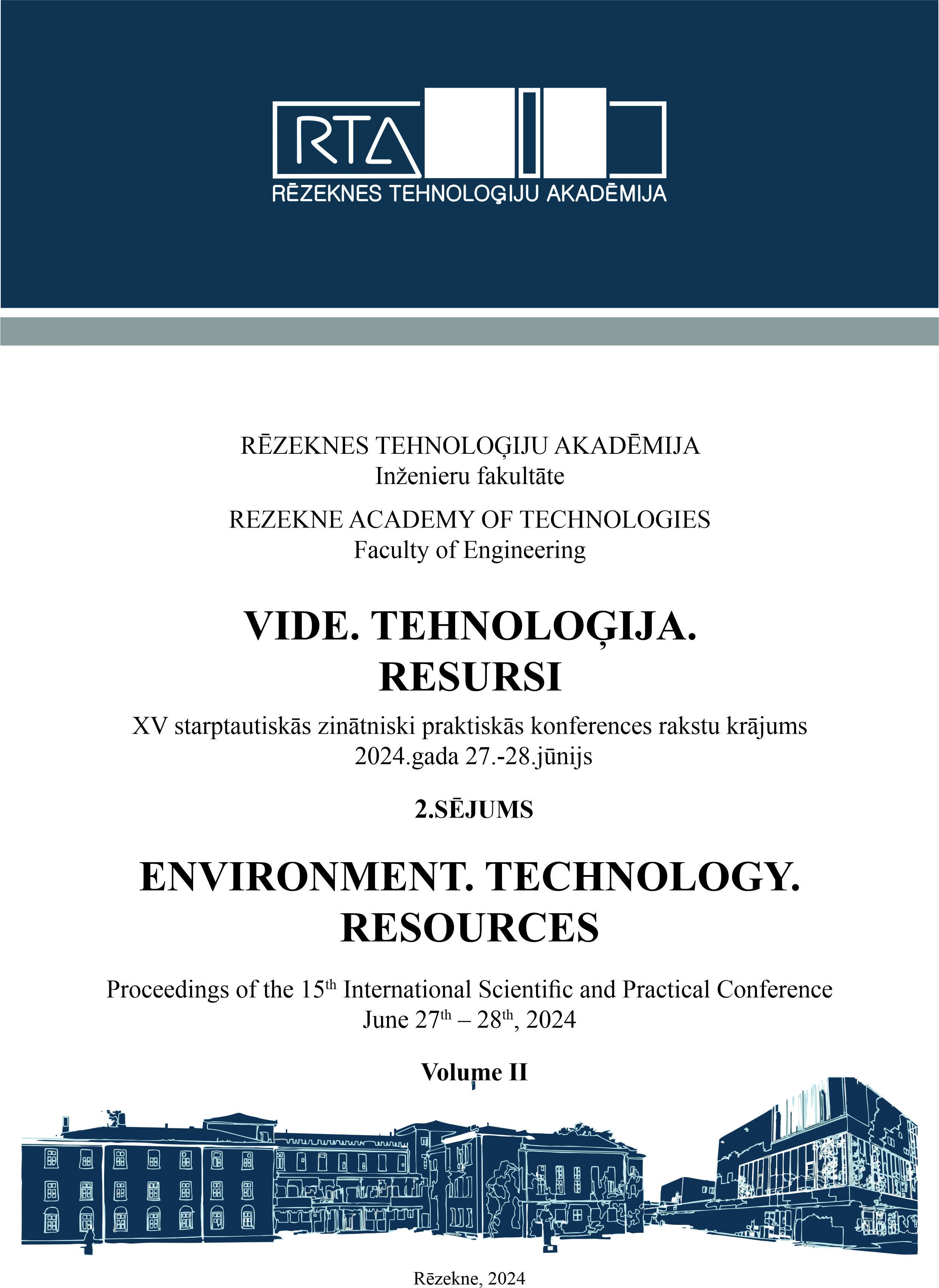ON SPECIAL FINITE DIFFERENCE APPROXIMATIONS FOR SOLVING SECOND ORDER DIFFERENTIAL EQUATIONS
DOI:
https://doi.org/10.17770/etr2024vol2.8020Keywords:
“Blow-up” phenomenon, differentiation matrices, finite difference scheme with exact spectrum, multi-points stencil, trigonometric interpolantAbstract
The described special methods are applicable for various mathematical physics problems with second-order differential equations involving periodic boundary conditions (PBCs) and first-order homogenous boundary conditions (FBCs). Solutions of some linear and nonlinear problems for parabolic type partial differential equations (PDEs) with FBCs are obtained, using the method of lines (MOL) to approach the PDEs in the time and the discretization in space applying the finite difference scheme with exact spectrum (FDSES). For PBCs we use the finite difference scheme (FDS) for locally approximating periodic function's derivatives in a 2n+1, n>=1 -point stencil, obtaining higher order accuracy approximation. This method in the uniform grid with N mesh points is used to approximate the differential operator of the second and the first-order derivatives in the space. In this paper, we show that the approximation using the FDSES method is equivalent to the spectral differentiation matrix method based on trigonometric (Fourier) interpolant.
Considering, that the solutions obtained in solving nonlinear problems can be very significantly different from classical solutions, for example, mathematical modelling of processes where temperature or energy is concentrated in a very narrow interval or around a point, again causes increased interest in such areas of application as laser technology, military sphere, etc.
In this regard, also in the given publication, the solution of the "blow-up" phenomenon of the boundary problem of the nonlinear heat conduction equation has been studied and obtained with the above-mentioned high-accuracy solving methods.
References
H. Kalis and A. Buikis, “Method of lines and finite difference schemes with exact spectrum for solution the hyperbolic heat conduction equation,” Mathematical Modelling and Analysis”, vol. 16, No 2, 2011, pp. 220-232.
V. L. Makarov and I. P. Gavrilyuk, “On constructing the best net circuits with the exact spectrum”, “Dopov. Akad. Nauk Ukr. RSR”, Ser. A, 1975, pp. 1077-1080.
L. N. Trefethen, Spectral methods in Matlab. Oxford - Pres, 2000.
J. A. C. Weideman and S. C. Reddy, “A Matlab differentiation matrix suite,” “ACM Transactions on Mathematical Software”, vol. 26, No 4, 2000, pp. 465-519.
D. Gottlieb, M. Y. Hussaini and S.A. Orszag, “Theory and applications of spectral methods”, “Spectral methods for partial differential equations”, 1984, pp. 1-54.
E. Tadmor “The exponential accuracy of Fourier and Chebyshev differencing methods”, “SIAM J. Numer. Anal.”, vol 23, No. 1, 1986, pp. 1-10.
C. Canuto, M. Y. Hussaini, A. Quarteroni T. A. Zang, Spectral methods in fluid dynamics. Berlin: Springer -Verlag, 1988.
M. Kokainis and H. Kalis, “Matrix representation of the finite difference method in a multi-point stencil for periodic boundary conditions”, “MMA2013 and MOE2013, May 27-30, 2013, Tartu, Estonia”, Tartu, p. 62., 2013.
H. Kalis and I. Kangro, Effective finite difference and Conservative Averaging methods for solving problems of mathematical physics, Monography. Rezekne: Rezekne Academy of Technologies, 2021.
A. Kalis I. Kangro and A. Aboltins, “Numerical analysis for system of parabolic equations with periodical functions”, “Engineering for Rural development, Jelgava 24.-26. 05. 2023”, Jelgava, 2023, pp.796-809.
H. Kalis I. Kangro and A. Gedroics, “Numerical methods of solving some nonlinear heat transfer problems”, “Int. Journ. of Pure and Applied Mathematics”, vol. 57, No. 4, 2009, pp. 467-484.
A. A. Samarskij, V. A. Galaktinov, S. P. and Kudrjumov, Blow-up solutions in the problems of quasilinear parabolic equations. Moscow: Nauka, 1987.
L. M. O. Korpusov, V. A. Ovchinnikov, A. G. Sveshnikov etc., Blow-up in nonlinear equations of Mathematical Physics, Theory and methods. Berlin, Boston: De Gruyter, 2018.
Downloads
Published
Issue
Section
License
Copyright (c) 2024 Ilmars Kangro, Harijs Kalis

This work is licensed under a Creative Commons Attribution 4.0 International License.



